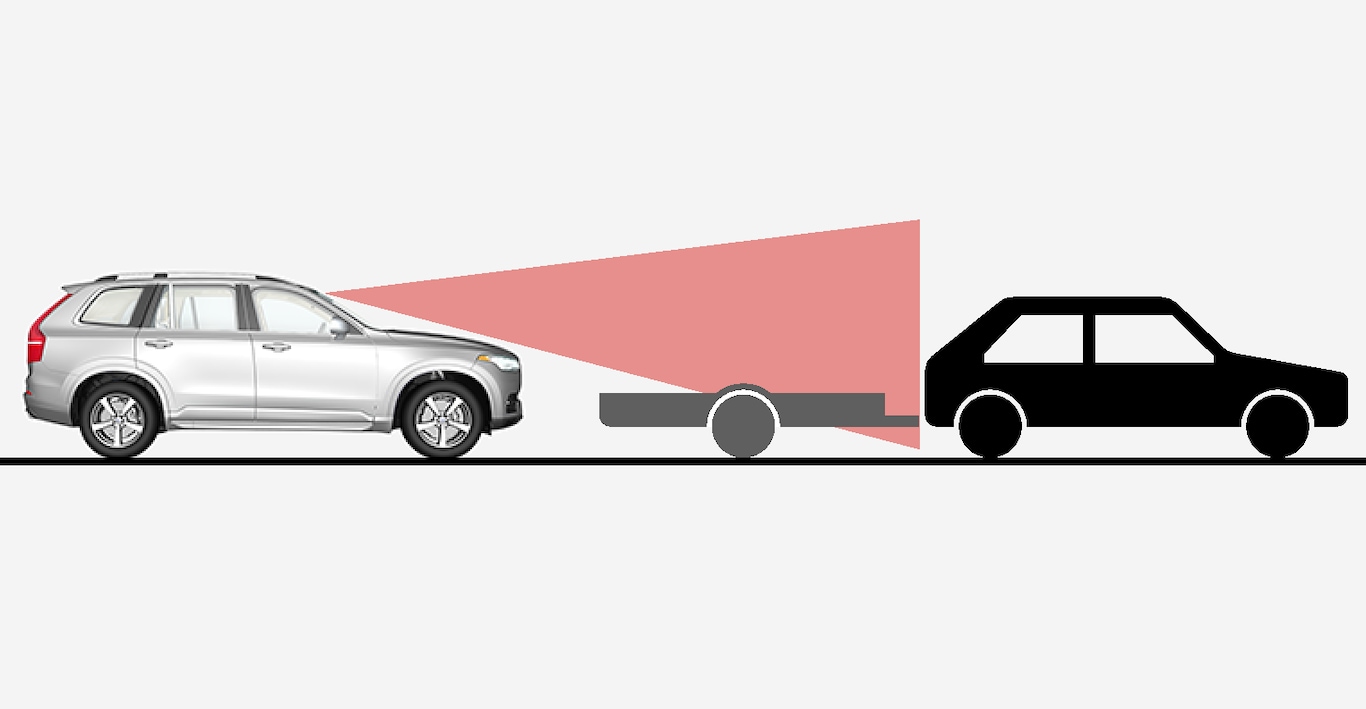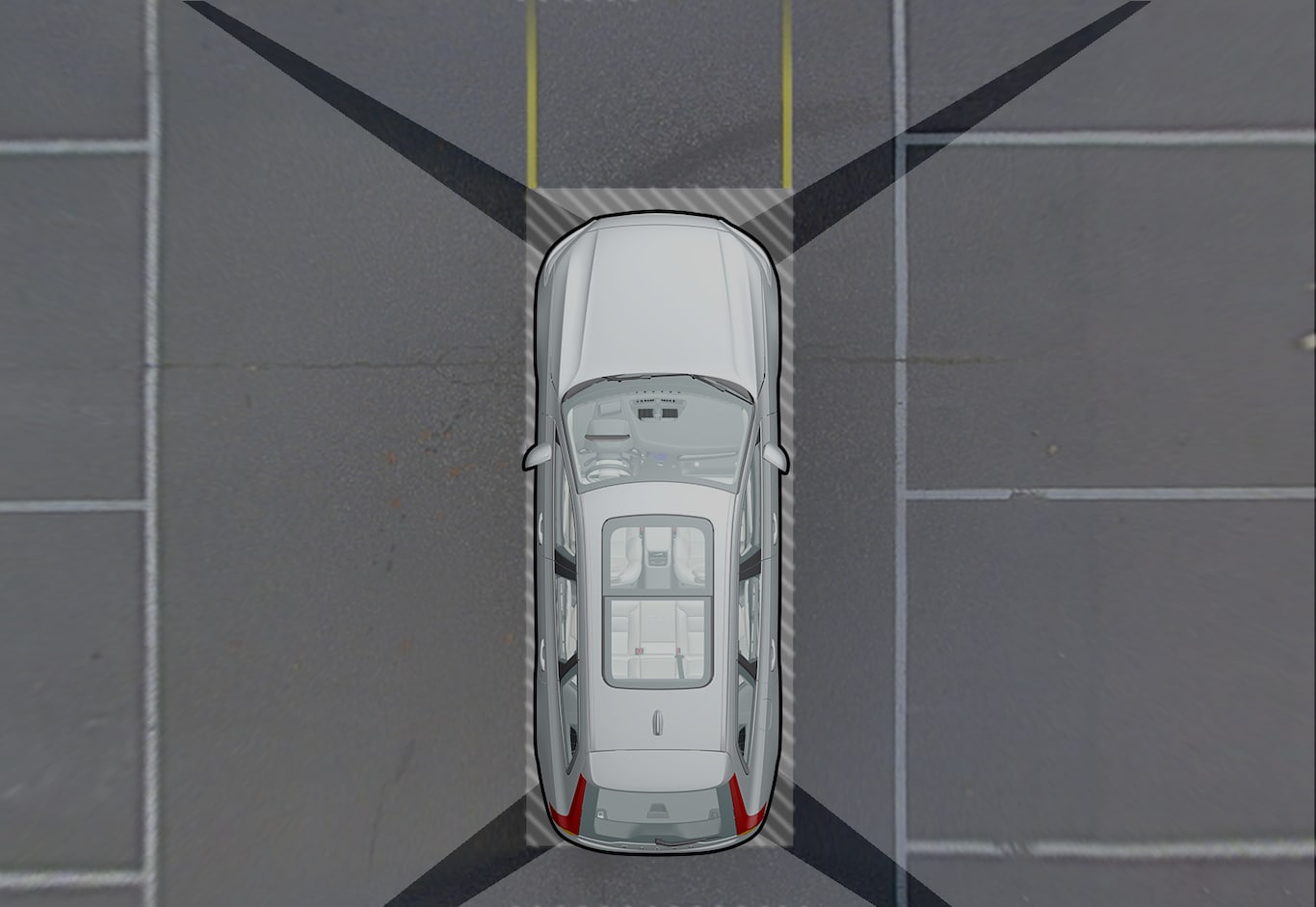Common limitations for camera and radar
Blocked unit

The camera unit is placed inside the upper section of the windscreen together with the car's radar unit.
Do not place, stick or mount anything on the inside or outside of the windscreen, in front of or around the camera and radar unit – this may interfere with camera and radar-based functions. This may result functions being reduced, being switched off completely or giving incorrect function responses.
High temperature
At very high temperatures the camera and radar unit can temporarily be switched off for about 15 minutes after the engine is started so as to protect the unit's electronics. The camera and radar unit restarts automatically when the temperature has fallen sufficiently.
Damaged windscreen
Note
- If a scratch, crack or stone chip appears on the windscreen in front of any of the "windows" for the camera and radar unit and covers an area of approx. 0.5 × 3.0 mm (0.02 × 0.12 in.) or more, a workshop1 must be contacted so that the windscreen can be replaced.
- Volvo recommends not repairing cracks, scratches or stone chips in the area in front of the camera and radar unit – the entire windscreen should be replaced instead.
- Before replacing a windscreen, contact a workshop1 to verify that the correct windscreen has been ordered and will be fitted.
- The same type of windscreen wipers or windscreen wipers approved by Volvo must be fitted when the windscreen is replaced.
- When replacing the windscreen, the camera and radar unit must be recalibrated by a workshop1 to ensure the functionality of all the camera and radar-based systems in the car.
Further limitations for radar
Vehicle speed
The radar unit's ability to detect a vehicle ahead is greatly reduced if the speed of the vehicle ahead is very different to the speed of your own car.
Limited field of vision
The radar unit has a limited field of vision. In some situations another vehicle is not detected, or the detection is made later than expected.

 Sometimes the radar unit is late at detecting vehicles at close distances - e.g. a vehicle that drives in between your car and the vehicle ahead.
Sometimes the radar unit is late at detecting vehicles at close distances - e.g. a vehicle that drives in between your car and the vehicle ahead. Small vehicles, such as motorcycles, or vehicles not driving in the centre of the lane can remain undetected.
Small vehicles, such as motorcycles, or vehicles not driving in the centre of the lane can remain undetected. In bends, the radar unit may detect a different vehicle than intended or lose a detected vehicle from view.
In bends, the radar unit may detect a different vehicle than intended or lose a detected vehicle from view.
Low trailers

Low trailers can also be difficult for the radar unit to detect, or are not detected at all - the driver should therefore be particularly careful when driving behind low trailers when the adaptive cruise control* or Pilot Assist* is activated.
Further limitations for camera
Impaired vision
The cameras have limitations similar to the human eye, i.e. may "see" worse in for example intense snowfall or rain, dense fog, heavy dust storms and snow flurries. Under such conditions, the functions of camera-dependent systems could be significantly reduced or temporarily disengaged.
Strong oncoming light, reflections in the carriageway, snow or ice on the road surface, dirty road surfaces or unclear lane markings can also significantly reduce camera function when it is used to scan the carriageway to detect pedestrians, cyclists, large animals and other vehicles.
Further limitations for Park assist camera*
Blind sectors

In the park assist camera's 360° view* obstacles/objects may "vanish" in the gaps between the individual cameras.
Warning
Light conditions
The camera image is adjusted automatically according to prevailing light conditions. Because of this, the image may vary slightly in brightness and quality. Poor light conditions can result in reduced image quality.